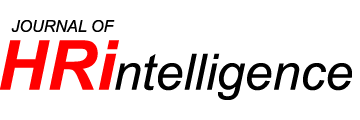Abstract
The research aimed 1) to survey the background of the Thai laborers in Thailand’s service industries effected by the Tsunami hit in 2004; 2) to study the Tsunami effects on economy, society and family; 3) to analyze the obstacles to providing and receiving help; 4) to suggest ways to provide help and remedy and to improve the Thai laborers in the service industries effected by the Tsunami hit. The sample groups in this Patong beach (Phuket province); 2) an officer of each Provincial Labor Office, city governors, and/or a local leader of each province; 3) a non-government organization member and the president of Hotel Federation; 4) 54 employers and/or those who acted as employers and 54 human resource department staff members from the hotels hit by the Tsunami.
The participatory action research (PAR) was conducted by using qualitative methodology and through documents, questionnaires, interviews and small-group meetings. The data was checked by triangulation method according to different time, places and target groups, and presented by descriptive analysis which included content analysis, inductive interpretations suggested by the interviews and small-group meetings as well as descriptive statistics.
The research findings were as follows:
1) Four in five of the Thai laborers are female. 32.0% of the laborers are between 25-29 years old and graduated with senior high school certificates; more than half or 88.0% of the laborers are married with children and live in the South of Thailand.
2) As for the Tsunami effects on economy, society, and family, more than half or 90.4% of the hotel staff members have been back to the hotels after the attack as the hotels are the main source of their income. 62.4% of the families are in a more critical financial status after the Tsunami incident while 70.4% gone into debt. 62.4% of them do not own houses and 72.0% do not own agricultural areas. Almost three in five of those who were dismissed from their jobs have not received help and 55.2% of the laborers have encountered family problems.
3) It is found that tere were not enough request forms for the laborers to appeal for help, the laborers did not understand their rights, the laborers received repetitive helps, the employers stopped giving financial support to the Social Security Offices, thus resulting in the lack of the laborers’ rights, and the employers did not report to the social security system the name lists of the laborers.
4) It is found that the factors concerning communication and processes in proving help caused obstacles at high level, with the average of 3.86, and the laborers’ opinion towards the two factors were slightly different. Moreover, the personal and government official factors caused obstacles at moderate level, with the averages of 3.49 and 3.36 respectively, and the laborers’ opinion towards the two factors were considerably different.
5) Three levels of providing help and remedy were seen. That is to say, at personal level, the laborers were moved from the effected areas, provided food, life bags, clothes and houses, given mental and physical treatments, given financial help, and informed of the information about their rights and access to their rights. At group level, they were educated and trained to perform the roles of parents and trained to handle stress while in the meantime labor relaton activities were also promoted. A society and community level, participation and relationship improvement among community members were promoted as well.
|

